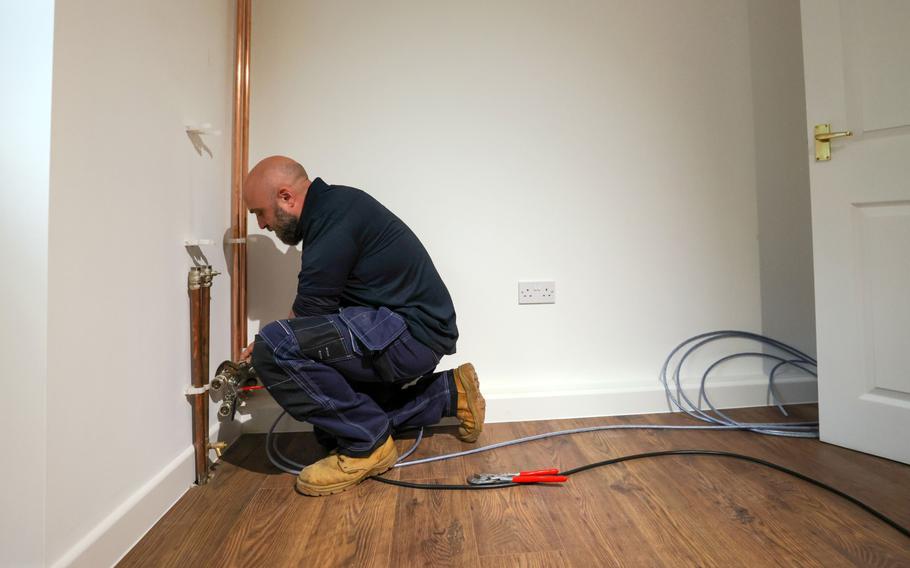
An engineer works on pipe installation inside a training house with an external heat pump at the Octopus Energy Ltd.’s training and R&D centre in Slough, U.K., on Sept. 28, 2021. (Chris Ratcliffe/Bloomberg)
There have been numerous cases of everyday citizens in Ukraine and across Europe doing extraordinary things to support the war effort.
Some left their home country and joined the international wing of the Ukrainian army to fight on the frontline. Cities in Poland, where nearly 1.5 million refugees from Ukraine have registered since the outbreak of the war, organized efforts to provide shelter, food and childcare. Britons donated some £400 million to support Ukrainians, and the U.K. is just one of many countries that have organized financial aid.
But even when people weren’t leaving behind work and family to fight the cause, those choosing to consume less energy and deploying green technologies made a difference. Whether that was simply to reduce bills, cut emissions or explicitly support Ukraine — it all added up. Combined with a warmer winter (thanks climate change), residential and commercial gas use, which is mostly for heating, fell an astonishing 15%.
That’s no small feat. When Russia invaded Ukraine last year, European politicians vowed to speed up the bloc’s transition away from fossil fuels to cut Russia off from its most important source of cash.
Governments mobilized and spent whatever it took to secure alternative sources of gas. At the same time they negotiated embargoes on Russian coal, crude and oil products. In retaliation, Russia turned off the cheap piped supplies that had become a vital source of European fuel, security and economic prosperity.
There was no way to instantly replace all of Russia’s fossil fuels with green alternatives. For starters, existing supply chains for solar panels or batteries aren’t capable of delivering the equipment needed to make such an abrupt shift. But the ramp up in government and private-sector spending seen last year has allowed Europe to move its clean energy transition forward by a few years.
The biggest and most rapid changes to Europe’s energy profile, however, are due to the actions of individuals. Households and businesses invested record amounts in cleaner ways to generate electricity, store power, stay warm, and drive around last year, compared with 2021.
There are reasons to remain wary about the direction of the transition. Clean energy advocates point out that Germany’s new investments in gas infrastructure, like floating import terminals, could lock-in the country’s dependency on fossil fuels. Still, the opposite has already started — and it has momentum on its side. A surge in new investments in renewable technologies has locked in demand for green electrons that will only keep growing.
More than anything, Europe has proven it has a population ready to take on big challenges, no matter the cost. A recent poll backs this up: Despite the financial impact of Europe’s stance toward Russia — from high food prices to big energy bills — three quarters of E.U. citizens said they stand behind the bloc’s support for Ukraine.
There are limits to individual action whether in a war or on global problems. At least in the case of climate change, however, as green technologies have become cheaper and more widely available, it’s putting more power in the hands of everyday citizens to deploy solutions than ever before.